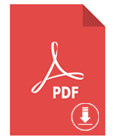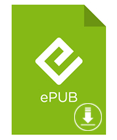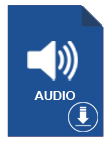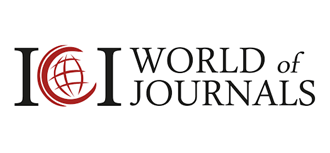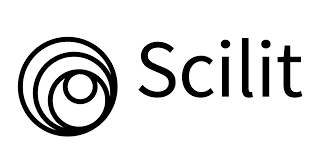Abstract
Restoring core blood volume is key to survival in severe haemorrhagic shock (SHS). Matching blood volume to vascular volume facilitates venous return to the heart, adequate cardiac output, blood pressure and perfusion of the essential organs. This is a review of the available practical options of doing so in the pre-hospital and in-hospital settings. We evaluate critically the use of blood products transfusion; pneumatic antishock garment (PASG), auto-transfusion tourniquet (A-TT) and pharmaceutical vasoconstrictors.
Keywords:Severe Shock; Pneumatic Antishock Garment; PASG; Auto-Transfusion Tourniquet (A-TT); Emergency Blood Transfusion
Abbreviations:2,3-DPG: 2,3-Bisphosphoglycerate; ATLS: Advance Trauma Life Support; A-TT: Auto-Transfusion Tourniquet; BLS: Basic Life Support; DVT: Deep Vein Thrombosis; Hgb: Haemoglobin; I/O: Intra-Osseous; IV: Intravenous; mmHg: Millimetres of Mercury; PASG: Pneumatic Antishock Garment; PCO2: Partial Pressure of Carbon Dioxide; RBC: Red Blood Cells; SHS: Severe Haemorrhagic Shock; SPO2: Oxygen Saturation
Introduction
Severe haemorrhagic shock (SHS) is the cause of death of nearly 2 million persons each year. Seventy eight percent of these cases are due to trauma and the balance are caused by ruptured aneurysms (10.2%), gastro-intestinal bleeding (7.5%) and pregnancy-related haemorrhages (3.7%) [1]. About a third of patients who suffer SHS die before they make it to the hospital and about 10% more die in the first 24 hours in the hospital. The concept of the “Golden Hour” has been shown by A Q Alarhayem, et al to be incorrect [2]. They stated that “...future efforts should be directed toward the development of therapies to increase the window of survival in the prehospital environment.”, particularly when evacuation and transport times are longer than 30 minutes. In this review we compare the pros and cons of methods that can be used to restore core blood volume in pre-hospital SHS.
Core blood volume restoration in SHS aims to keep systolic blood pressure above 90 mmHg, to keep heart rate below 120 beats per minute and to maintain the patient alert in the absence of head trauma and/or mental functions altering drugs. The goals of therapy are also common to all methods. They are to keep sufficient perfusion of the vital tissues (heart, brain, viscera, kidneys). Minute-to-minute monitoring of the SHS patient is commonly done by repeated measurements of vital signs: blood pressure, heart rate, SPO2 and if the patient is intubated - end-tidal PCO2. These parameters are useful but can miss deficiencies of tissue perfusion. As such, monitoring of lactate and urine output are also done to assess the extent of shock.
Discussion
The SHS hemodynamics restoration methods
We review here 4 diverse methods for restoring core blood volume and pressure as follows:
1.Expansion of blood volume by infusion or transfusion of blood products.
2.Constriction of peripheral blood vessels by infusing vasoactive drugs.
3. Compression of the lower body legs (and abdomen) by
pneumatic or non-pneumatic antishock trousers.
4. Shifting the blood from the legs to the core by the autotransfusion
tourniquet.

Infusion and Transfusion
The timeline of in-hospital massive transfusion (i.e., > 4 units of blood and blood products) was found to be 20 minutes from admission for red blood cells (RBC), 26 minutes for plasma and 72 minutes for platelets [3]. The information on pre-hospital initiation of blood transfusion is scarce; it typically requires starting two large bore IVs or an IV plus an intra-osseous (I/O) line [4]. The blood, which is typically O- (O negative) is transported cold and needs to be warmed up with a dedicated warmer. The transfusion itself can be quite quick, about 2-4 minutes per unit. Transfusion of whole fresh blood is considered better than transfusion of components (i.e., RBC + plasma + platelets). Infusion of crystalloids is least desirable, but is still widely used given its logistical simplicity and much lower cost.
The drawbacks of massive transfusion of “fresh” whole blood are related to its not really being fresh. The blood is anticoagulated as soon as it is taken from the blood donor. Citrate, a calcium binder, is mixed with the blood and remains active throughout. When the blood is transfused into the recipient, so does the citrate and massive transfusion is often associated with reduced clotting and increased bleeding. In addition, storing donated blood 14-21 days, nearly depletes 2,3-DPG and causes a substantial shift to the left of the oxyhemoglobin dissociation curve [5]. The result is that for 24- 72 hours after transfusing the blood to a patient it does not supply oxygen to the tissue. The blood is loaded with oxygen, as can be seen by the high level of saturation, but the oxygen remains in the blood and is not available for mitochondrial tissue metabolism. Other drawbacks are the risk of developing antibodies and allergic reactions against allogenic blood.
Vasoconstricting Drugs
The use of vasoactive drugs in SHS is controversial [6] and in fact discouraged by the teaching of the ATLS (Advance Trauma Life Support). Unlike distributive shocks (e.g. septic shock, anaphylactic shock) where vasoactive drugs such as noradrenaline and adrenaline are widely indicated and used, the blood vessels in the early stages of haemorrhagic shock (i.e., “compensated” phase) are maximally constricted by endogenous sympathetic activity. As such, adding external vasoconstrictors have not been shown to provide a benefit. That said, we have observed the use of vasoactive drugs in haemorrhagic shock that did not respond to quick infusion of crystalloids. Furthermore, once tissue hypoperfusion results in anaerobic metabolism, acidemia with release of sympathetic vasoconstriction, there may be room for vasoactive supplement. In a recent study Sims et al [7] evaluated the effect of low-dose supplementation of arginine vasopressin on need for blood product transfusions in patients with trauma and haemorrhagic shock and found a significant reduction in need for blood and blood products. The inclusion of vasoactive drugs in this review is for the sake of completion and should not be construed as a recommendation to do so indiscriminately.
Lower Body Compression by Pneumatic Antishock Garment (PASG)
PASG apply external pressure by inflating air bladders around
the legs and abdomen to a pressure of up to 104 mm Hg. When
the patient is in severe shock this pressure compresses the blood
vessels and stops the blood flow. The physiological logic behind
the introduction of PASG to widespread clinical use for treatment
of shock in the early 1970s was based on the following arguments:
1. Compression of blood vessels causes shifting of blood
from the less essential tissues of the extremities to the central
circulation - the ‘auto-transfusion’ effect.
2. Inflation of the PASG to the maximum level (104 mmHg)
completely collapses the arteries in the lower body and redirects
the cardiac output to the essential organs.
3. External counter-pressure reduces bleeding from
severed blood vessels beneath it. This confirmed beneficial effect
of PASG is most apparent when the bleeding is due to blunt or
penetrating abdominal injury [8].
4. PASG can be used to support and stabilize fractures of the
pelvis with or without shock. It reduces blood loss and provides
temporary splinting of the bones during transport [9].
Pitfalls of using the PASG: Contrary to these potential
advantages of PASG, several concerns were presented regarding
its use:
1. Delay in transport. The application of PASG was shown
to extend the time of transport by approximately 5 minutes when
used by well-trained paramedics [10].
2. When PASG is applied to patients with chest trauma,
especially when there is bleeding into the pleural space, multiple
rib fractures, cardiac tamponade etc. it interferes with breathing
and may reduce cardiac output due to increased afterload [11].
3. Use of PASG during air transport, where ambient air
pressures change significantly, is not desired [12].
4. Most importantly, sudden removal of the PASG or loss
of bladder pressure is associated with rapid deterioration of the
patient’s condition.
5. PASG application limits the access to the lower body of
the patient. It must be removed before diagnostic and/or surgical
procedures are performed on the abdomen, groin area (e.g.
femoral vein access) and the legs.
• Clinical Evidence: Studies conducted in the mid- to late- 1980s evaluated the outcome of shock victims when PASG was used or avoided. Over 900 patients were enrolled in one of the studies [10]. The data showed no advantage of PASG use in terms of overall survival. This study included patients with chest trauma and intrathoracic haemorrhage, a condition in which PASG was known to be detrimental from early on [8]. Indeed, this group had worse results when PASG was used which biased the overall statistics. Another study where PASG was used for victims of abdominal trauma with profound shock (blood pressure < 70 mmHg) showed that use of PASG tended to improve the outcome [10,13,14].
Auto-Transfusion Tourniquet
The auto-transfusion tourniquet (A-TT) is an elastic ring, wrapped around by a stockinet and straps. When the A-TT is placed on the toes and the straps are pulled, the ring rolls up the leg while applying concentric pressure on the tissues beneath it. This pressure is greater than the patient’s systolic blood pressure so that the blood in the leg is squeezed to the core and the blood flow to the leg is blocked. Applying the A-TT on an adult’s leg shifts more than 500 cc of blood from each leg to the central circulation [15]. The application of the A-TT is done by a single basic life support (BLS) caregiver and takes 10-20 seconds per leg.
• Clinical Evidence: The result is elevation of core blood volume and blood pressure [16,17]. It is used when the patient is in severe shock (i.e., systolic blood pressure < 80 mmHg with reduced cognition). It is recommended to apply it first on one leg and if blood pressure is still less than 80, apply to the other leg. The A-TT can stay on the patient for up to 120 minutes, giving extra time for surgical repair of the bleeding. Removal of the A-TT is done in small, 20 cm, steps, while monitoring vital signs. Deep vein thrombosis is an absolute contraindication of applying the A-TT to prevent dislodging of a thrombus and pulmonary infarct.
Conclusion
Transfusion of fresh whole blood is the treatment of choice for severe haemorrhagic shock when it is available and logistically feasible. Else, applying the A-TT as “bridge to blood” and as a method to extend the window of survival is suggested. More clinical data is needed to validate this conclusion.
References
- Cannon JW (2018) Hemorrhagic Shock. N Engl J Med. 378(4): 370-379.
- Alarhayem AQ, Myers JG, Dent D, Liao L, Muir M, et al. (2016) Time is the enemy: Mortality in trauma patients with hemorrhage from torso injury occurs long before the "golden hour". Am J Surg. 212(6): 1101-1105.
- Boye M, Py N, Libert N, Chrisment A, Pissot M, et al. (2022) Step by step transfusion timeline and its challenges in trauma: A retrospective study in a level one trauma center. Transfusion. 62 Suppl 1: S30-S42.
- Elisabeth C van Turenhout, Sebastiaan M Bossers, Stephan A Loer, Georgios F Giannakopoulos, Lothar A Schwarte, et al. (2020) Pre‐hospital transfusion of red blood cells. Part 1: A scoping review of current practice and transfusion triggers Transfus Med. 30(2): 86-
- Andrew V Scott, Enika Nagababu, Daniel J Johnson, Khaled M Kebaish, Joshua A Lipsitz, et al. (2016) 2,3-Diphosphoglycerate Concentrations in Autologous Salvaged Versus Stored Red Blood Cells and in Surgical Patients After Transfusion Anesth Analg. 122(3): 616-623.
- Babita Gupta, Neha Garg, Rashmi Ramachandran (2017) Vasopressors: Do they have any role in hemorrhagic shock? J Anaesthesiol Clin Pharmacol 33(1): 3-
- Carrie A Sims, Daniel Holena, Patrick Kim, Jose Pascual, Brian Smith, et Al. (2019) Effect of Low-Dose Supplementation of Arginine Vasopressin on Need for Blood Product Transfusions in Patients with Trauma and Haemorrhagic Shock - A Randomized Clinical Trial. JAMA Surg 154(11): 994-1003.
- Honigman B, Lowenstein SR, Moore EE, Roweder K, Pons P (1991) The role of the pneumatic antishock garment in penetrating cardiac wounds. 266: 2398-2401.
- Moreno C, Moore EE, Rosenberger A, Cleveland HC (1986) Haemorrhage associated with major pelvic fracture: a multispecialty challenge. J Trauma 26: 987-994.
- Mattox KL, Bickell W, Pepe PE, Burch J, Feliciano D (1989) Prospective MAST study in 911 patients. J Trauma 29: 1104-1112.
- Jabbour I, Savino JA, Agarwal N, Byrne D (1986) Pneumatic antishock garments detrimental in elderly with diminished myocardial reserve. Curr Surg 43: 498-501.
- Sanders AB, Meislin HW (1983) Effect of altitude change on MAST suit pressure. Ann Emerg Med 12: 140-144.
- Cayten CG, Berendt BM, Byrne DW, Murphy JG, Moy FH (1993) A study of pneumatic antishock garments in severely hypotensive trauma patients. J Trauma 34: 728-735.
- Oertel T, Loehr MM (1984) Bee-sting anaphylaxis: the use of medical antishock trousers. Ann Emerg Med 13: 459-461.
- Oren Gavriely, Tov Nave, Aharon Sivan, Yael Shabtai-Musih, Noam Gavriely (2004) Auto Transfusion and Blood Pressure Elevation By Elastic Leg Compression In Normal Subjects | Semantic Scholar.
- Martin Pallares Perez, David H Tang, Noam Gavriely. Emergency treatment of severe haemorrhagic shock with Auto-Transfusion Tourniquet - retrospective chart review of first 10 patients (in review)
- David H Tang, Bohdan T Olesnicky, Michael W Eby, Lawrence E Heiskell (2013) Auto-transfusion tourniquets: the next evolution of tourniquets 5: 29-32.




